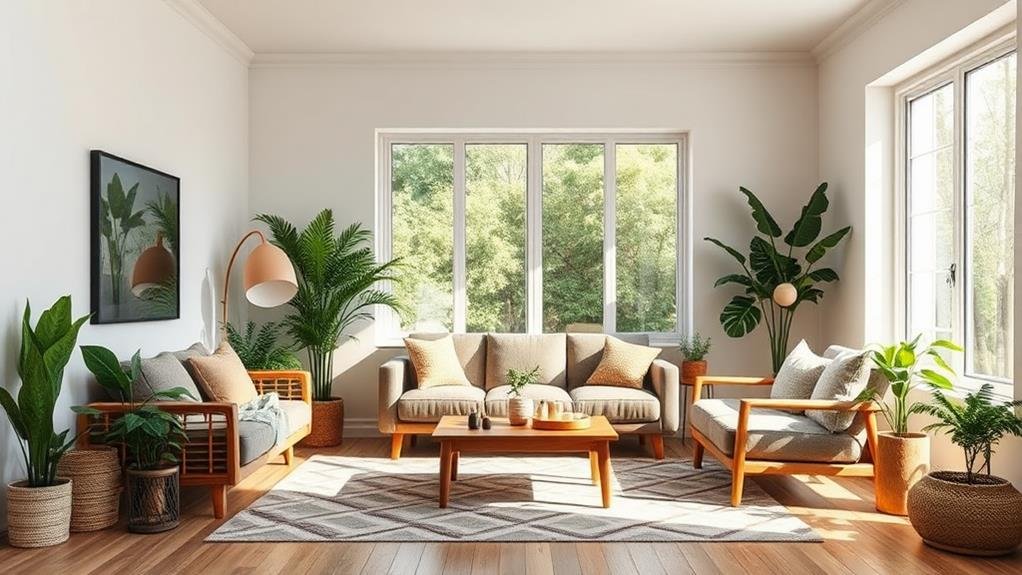Elevate your space sustainably by incorporating eco-friendly choices like bamboo flooring and energy-efficient lighting. Enhance air quality with plants and proper ventilation. Explore biophilic design principles to connect with nature indoors. Smart home integration optimizes energy usage while promoting convenience. Dive deeper into sustainable color palettes and material choices for a harmonious living environment. From waste management to water conservation, every aspect contributes to reducing your environmental impact. Discover creative ways to upcycle and recycle, while supporting local artisans and promoting mindful consumption. Your journey towards a more sustainable home starts here, with endless possibilities to make a positive impact.
Key Takeaways
- Sustainable design enhances aesthetics and environmental responsibility.
- Eco-friendly materials reduce waste and promote occupant health.
- Energy-efficient lighting and water-saving fixtures lower environmental impact.
- Biophilic design principles integrate nature for well-being and tranquility.
- Smart home technology optimizes sustainability and energy efficiency.
Benefits of Sustainable Design
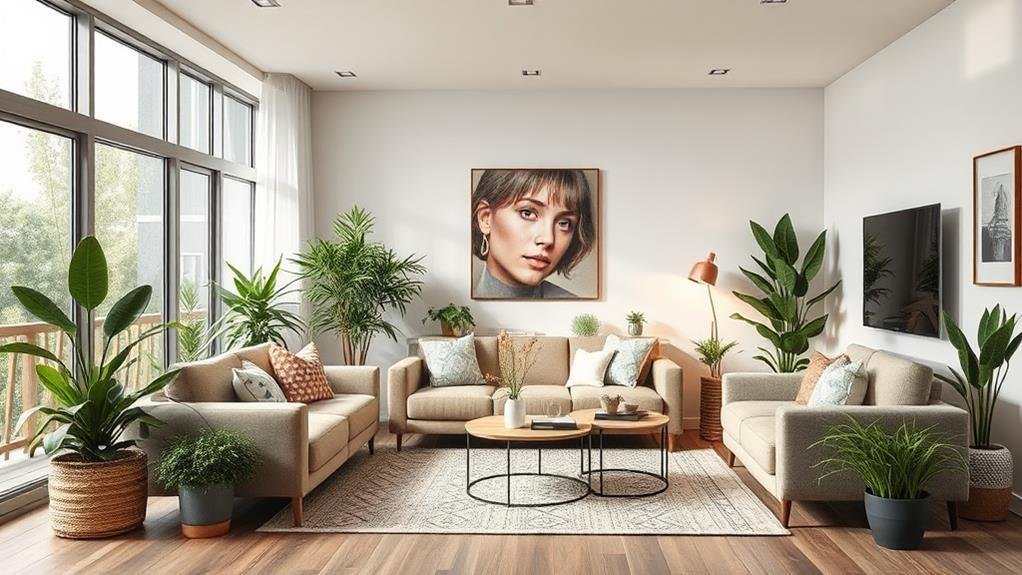
Unlocking the myriad advantages of sustainable design begins with a shift in perspective. Embracing sustainable aesthetics not only elevates your space but also contributes to ethical sourcing practices, making a positive community impact.
Beyond the visual appeal, sustainable design offers long term savings through energy efficiency and resource conservation. By prioritizing health benefits, such as improved air quality and natural light optimization, sustainable design ensures a space that nurtures well-being.
Additionally, choosing sustainable materials reflects environmental responsibility, aligning with current innovation trends in design. The versatility of sustainable design allows for creative expression while increasing market value and desirability.
Seamlessly integrating sustainable practices into your lifestyle fosters a deep connection with your surroundings and promotes a mindful way of living. Embrace the beauty and functionality of sustainable design to not only enhance your space but also contribute to a more sustainable future.
Eco-Friendly Materials to Consider
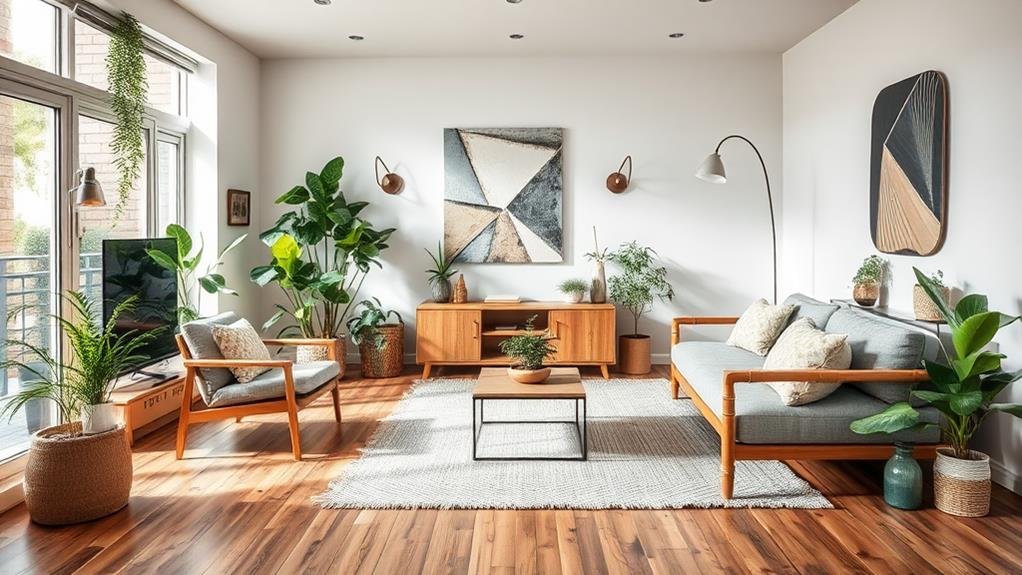
When it comes to designing sustainably, considering eco-friendly materials is key.
Opting for green materials not only benefits the environment but also enhances the health and well-being of those in the space.
From sustainable furnishing options to renewable resources, there are plenty of choices to make your design both stylish and environmentally conscious.
Green Materials Selection
Exploring sustainable design choices is vital when it comes to selecting materials for your project. In the realm of green materials selection, there are numerous eco-friendly options to consider.
Opt for recycled materials to reduce waste and lower your carbon footprint. Look for sustainable sourcing and eco certifications to ensure ethical production practices. Biodegradable options offer environmentally friendly alternatives, while supporting local artisans can add a unique touch to your project.
Consider the life cycle and material durability when making your choices to promote longevity. Embrace natural textures for a harmonious design that connects with the environment.
Waste reduction can be achieved through innovative applications and material repurposing. Stay informed about sustainable trends and eco labeling to make informed decisions that benefit both your space and the planet.
Choose wisely and integrate green materials to create a beautiful and sustainable interior design.
Sustainable Furnishing Options
Discover the intrinsic beauty and environmental benefits of sustainable furnishing options through the use of eco-friendly materials. Choosing ethical sourcing and durable materials won't only enhance the aesthetics of your space but also contribute positively to the planet.
Opt for multifunctional furniture pieces that serve dual purposes, promoting versatility and efficiency in your design scheme. Support local artisans by incorporating their unique creations into your home, adding a touch of authenticity and care to your decor.
Embrace minimalistic designs that prioritize simplicity and functionality, creating a serene and clutter-free environment. Consider using reclaimed wood for its rustic charm and sustainability, infusing your space with history and character.
Explore biodegradable options for a greener footprint and peace of mind. Incorporate modular furnishings that adapt to your evolving needs, promoting flexibility and longevity in your design choices.
Enhance your space with vintage finds that tell a story and add a sense of nostalgia. Choose sustainable upholstery that's both stylish and eco-conscious, completing your sustainable design journey with every detail meticulously curated.
Energy-Efficient Lighting Solutions
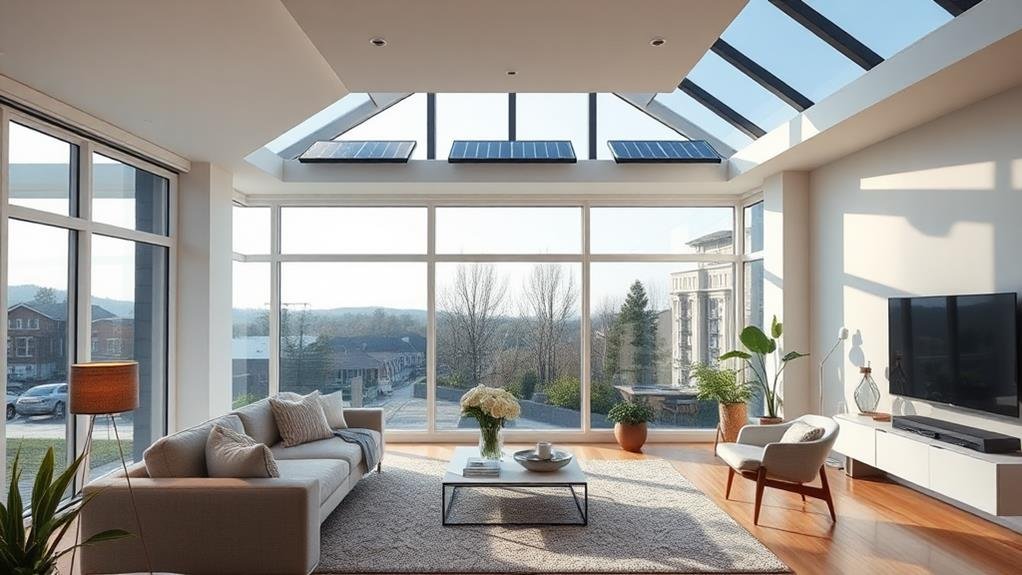
When it comes to energy-efficient lighting solutions, incorporating LED technology can significantly reduce your electricity consumption while providing long-lasting and durable illumination.
Furthermore, harnessing the importance of natural light not only helps to decrease energy usage but also promotes a healthier environment by enhancing mood, productivity, and overall well-being.
LED Benefits
With sustainability at the forefront of modern design, the adoption of LED lighting solutions has emerged as a crucial choice for energy-conscious individuals and businesses alike.
LED lights offer significant lifespan benefits compared to traditional incandescent bulbs, lasting up to 25 times longer. This not only reduces maintenance costs but also lessens the frequency of replacements, contributing to a sustainable lifestyle.
Moreover, LED lighting allows for customization through varying color temperatures, providing flexibility to create different atmospheres and moods within a space.
The cool white light of higher color temperatures is ideal for task lighting in work areas, while warmer tones create a cozy ambiance in living spaces.
Natural Light Importance
Enhancing your living or workspace with abundant natural light isn't just about aesthetics; it's a strategic move towards energy-efficient lighting solutions.
Embracing daylight optimization not only reduces your reliance on artificial lighting but also has a multitude of benefits for both your health and the environment. Sunlight exposure not only brightens up your space but can also enhance productivity, mood, and even regulate your sleep patterns.
When designing or arranging your space, consider positioning furniture or workstations near windows to maximize natural light intake.
Utilize light-colored surfaces and strategically placed mirrors to reflect and amplify sunlight throughout the room. Additionally, incorporating skylights or light tubes can bring in even more natural light, reducing the need for electric lighting fixtures during the day.
Water-Saving Fixtures and Appliances

Designing a sustainable living space involves integrating water-saving fixtures and appliances to reduce water consumption.
By incorporating innovative solutions like rainwater harvesting and greywater systems, you can make a significant impact on conserving this precious resource.
Here are 4 ways to incorporate water-saving fixtures and appliances into your sustainable design:
- Low-flow Fixtures: Install low-flow faucets, showerheads, and toilets to minimize water usage without compromising performance.
- Energy-Efficient Appliances: Choose dishwashers and washing machines with high energy efficiency ratings to reduce water consumption during operation.
- Rainwater Harvesting: Utilize rain barrels or cisterns to collect rainwater for landscape irrigation, reducing reliance on municipal water sources.
- Greywater Systems: Implement systems that recycle water from sinks, showers, and laundry for non-potable use like flushing toilets or watering plants.
Indoor Air Quality Improvement
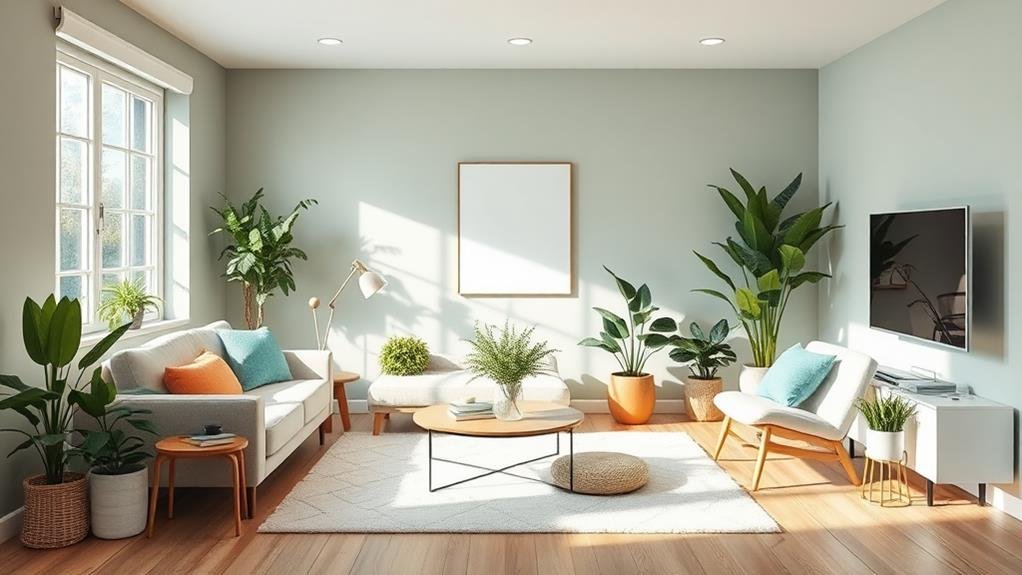
Ready to breathe easier in your space? Consider opting for eco-friendly paint choices that contain fewer volatile organic compounds (VOCs) to minimize indoor air pollution.
Explore the natural air purifying qualities of houseplants like spider plants and peace lilies or invest in air purifiers for enhanced air quality.
Lastly, ensure your home has proper ventilation systems in place to expel stale air and bring in fresh, clean air to maintain a healthy indoor environment.
Eco-Friendly Paint Choices
Consider this: Did you know that the paint choices you make can have a significant impact on the indoor air quality of your living or working space?
Making eco-friendly paint choices can't only enhance the aesthetics of your environment but also contribute to a healthier indoor atmosphere. Here are some key points to keep in mind:
- Opt for Low VOC Options: Volatile Organic Compounds (VOCs) are harmful chemicals that can off-gas from conventional paints, leading to indoor air pollution. Choosing low VOC paints helps in reducing these toxic emissions.
- Look for Environmental Certifications: Seek out paints from eco-conscious brands that carry environmental certifications, ensuring that they meet specific sustainability standards.
- Explore Natural Finishes: Consider paints with natural finishes, such as eco-friendly pigments and sustainable color palettes, to add beauty to your space without compromising on environmental impact.
- Consider Recycled Materials: Some eco-conscious brands offer paints made from recycled materials, providing a more sustainable option for your painting projects.
Natural Air Purifiers
Enhancing the quality of indoor air is a crucial aspect of creating a healthy and livable environment. One effective way to achieve this is by incorporating natural air purifiers into your living spaces.
Air purifying plants not only add a touch of nature to your home but also work wonders in improving air quality. Setting up indoor gardens with these plants helps in controlling humidity levels and infusing your space with natural scents.
Taking care of these plants involves regular watering, adequate sunlight, and occasional pruning to ensure they thrive and continue to purify the air.
Not only do these natural air purifiers contribute to better air quality, but they also offer aesthetic benefits by adding a splash of greenery to your decor.
Remember to adapt your plant care routine to seasonal changes to keep them healthy throughout the year.
Proper Ventilation Systems
Improving indoor air quality goes beyond just incorporating natural air purifiers like plants in your living spaces.
Proper ventilation systems play a crucial role in maintaining a healthy indoor environment.
Here's how you can optimize ventilation for better air quality:
- Mechanical Ventilation: Utilizes fans and duct systems to remove stale air and bring in fresh outdoor air.
- Natural Ventilation: Relies on windows, vents, and other openings to allow fresh air to circulate indoors.
- Whole-House Ventilation: Ensures consistent airflow throughout the entire house, preventing stagnant air pockets.
- Balanced Ventilation: Balances air intake and exhaust to maintain proper indoor air quality levels.
Sustainable Furniture Options
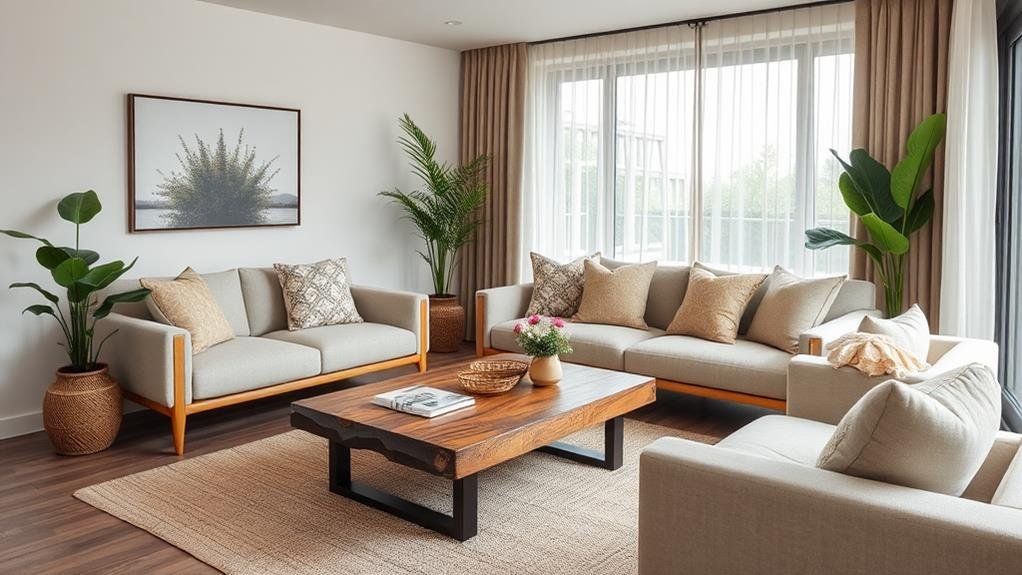
Have you ever wondered how you can make your living space more sustainable without compromising on style and comfort? When it comes to sustainable furniture options, there are plenty of choices available.
Opting for pieces made from reclaimed wood not only adds a unique touch to your space but also reduces the demand for new wood resources. Vintage furniture adds character and history to your home while promoting a circular economy.
Look for modular designs that can adapt to your changing needs, promoting a versatile and long-lasting approach. Supporting local artisans ensures that your furniture is crafted with care and attention to detail, often resulting in one-of-a-kind pieces.
Choosing multi-functional furniture not only saves space but also reduces the need for buying additional items. Seek out pieces made from biodegradable materials and produced with low environmental impact in mind.
Prioritizing sustainable sourcing and ethical manufacturing practices contributes to a more conscious consumption culture. Embracing minimalistic aesthetics promotes a clutter-free environment and timeless design.
Green Flooring Choices
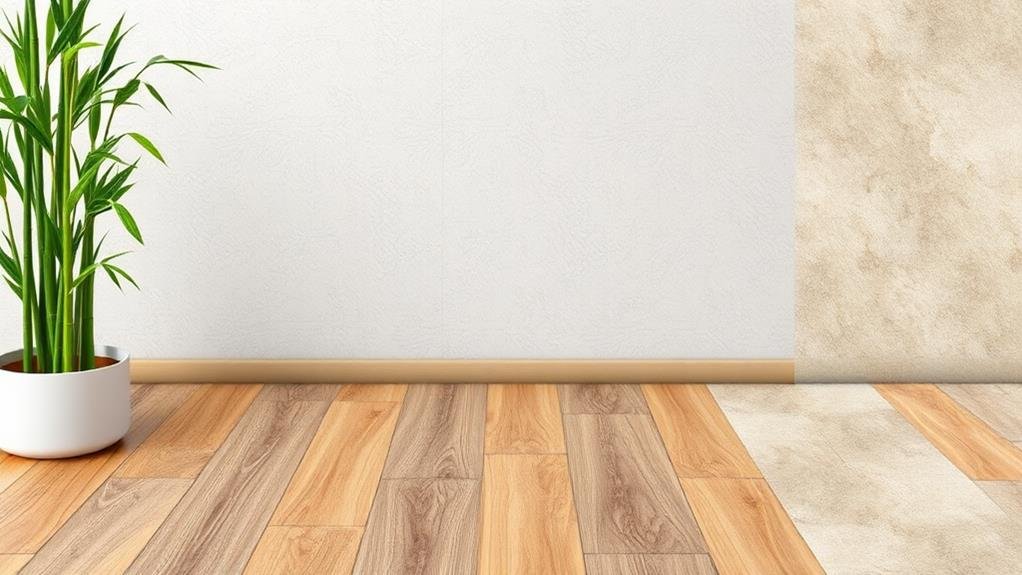
When it comes to creating a sustainable living space, making mindful choices extends beyond furniture to the very foundation – your flooring. Choosing the right green flooring not only adds style to your home but also contributes to a healthier environment.
Here are some eco-conscious options to consider:
- Bamboo Flooring: A fast-growing renewable resource that provides durability and a sleek modern look.
- Cork Tiles: Harvested from the bark of cork oak trees without harming them, offering a soft and comfortable feel underfoot.
- Reclaimed Wood: Salvaged from old structures, this option adds character and history to your floors.
- Rubber Flooring: Made from recycled rubber tires, it's durable, water-resistant, and provides excellent soundproofing.
These sustainable choices, along with linoleum, natural stone, eco-friendly carpets, sustainable laminates, and water-resistant materials, offer a variety of styles and benefits while reducing your environmental footprint.
Selecting flooring materials that incorporate soundproofing solutions further enhances your living space and promotes eco-friendliness.
Eco-Conscious Paint and Finishes
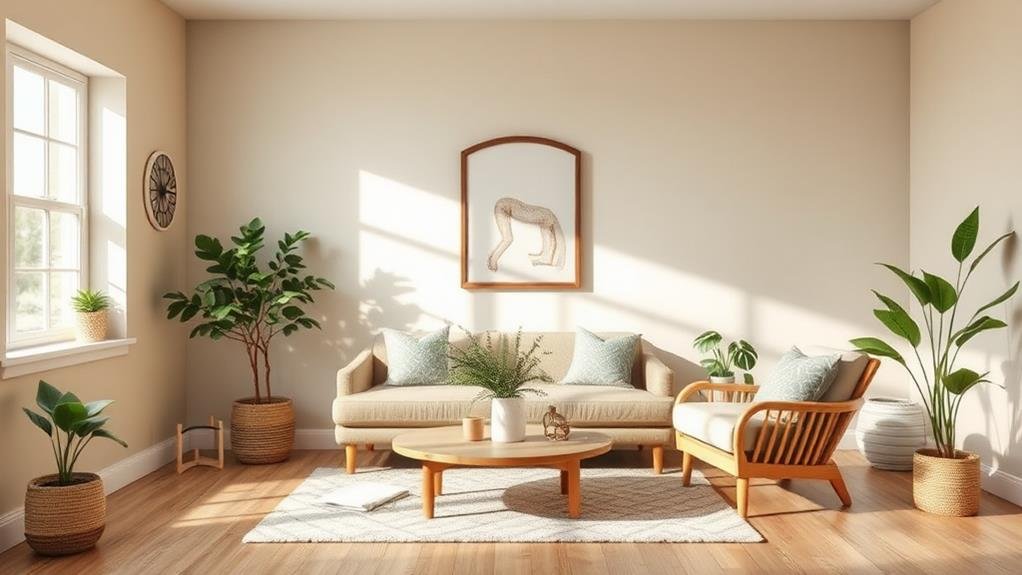
Choosing eco-conscious paint and finishes for your home not only enhances aesthetics but also promotes a healthier indoor environment.
When selecting paint, look for options made with eco-friendly pigments that are low in volatile organic compounds (VOCs). These paints emit fewer harmful chemicals, reducing air pollution and the risk of respiratory issues.
Opt for sustainable finishes such as natural oils, waxes, or shellacs that are non-toxic and durable.
These finishes not only protect your surfaces but also support a cleaner, greener planet. Eco-conscious paints and finishes are available in a variety of colors and textures, allowing you to express your style without compromising the environment.
Recycling and Upcycling Tips
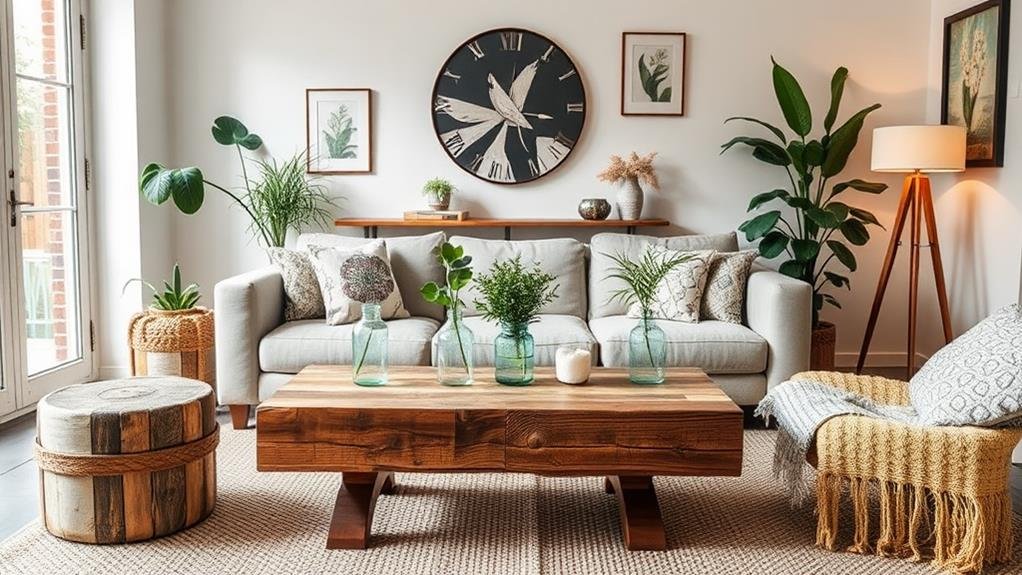
Enhancing sustainability in your home goes beyond just paint and finishes. When looking to recycle and upcycle, consider these tips to create a more eco-friendly living space:
- Creative Repurposing: Transform old furniture into unique pieces through DIY projects. Don't be afraid to get creative and give new life to items that might otherwise end up in a landfill.
- Sustainable Sourcing: Support local artisans who craft goods from sustainable materials. This not only reduces your carbon footprint but also helps promote community involvement and economic growth.
- Waste Reduction: Opt for eco-friendly donations instead of throwing away unwanted items. By giving to charity or participating in a community swap, you can ensure that items find new homes and avoid contributing to landfills.
- Secondhand Shopping: Explore secondhand stores for furniture and decor. Mindful consumption can significantly reduce the environmental impact of home design, and you may uncover beautiful gems with a bit of treasure hunting.
Biophilic Design Principles
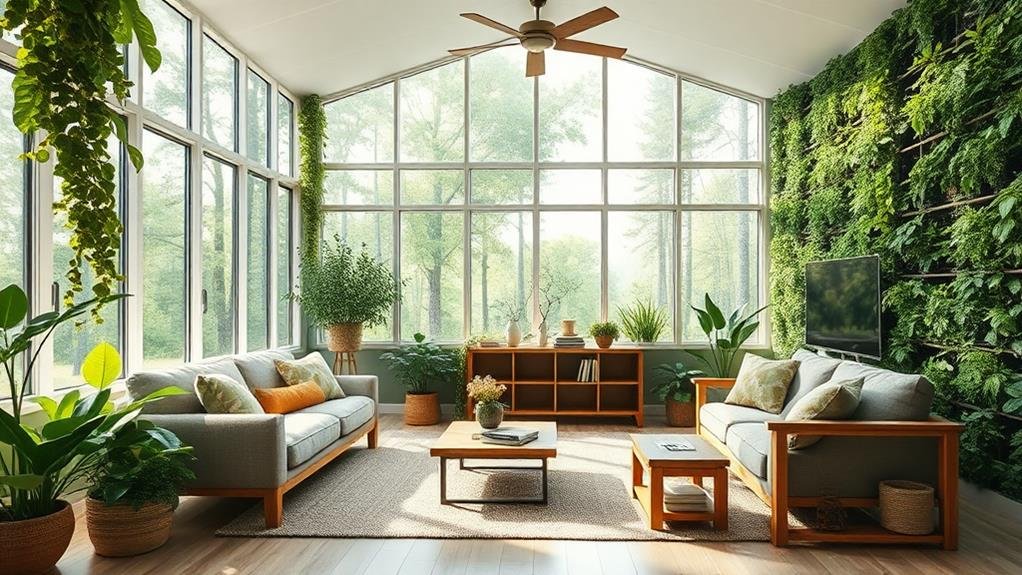
Curious about how to seamlessly integrate nature into your living spaces for a harmonious and sustainable design? Biophilic design principles offer a way to bring the outdoors in, enhancing your well-being and connection with nature right in your home.
By incorporating nature-inspired aesthetics and plant integration, you can create a space that not only looks beautiful but also promotes a sense of tranquility and eco-friendliness.
To embrace biophilic design, consider adding natural elements like potted plants, green walls, or large windows that frame outdoor views. These elements not only improve air quality but also provide a refreshing pop of greenery that can transform any room.
Additionally, using materials like wood, stone, or bamboo can further emphasize the natural aspect of your space.
Smart Home Technology Integration
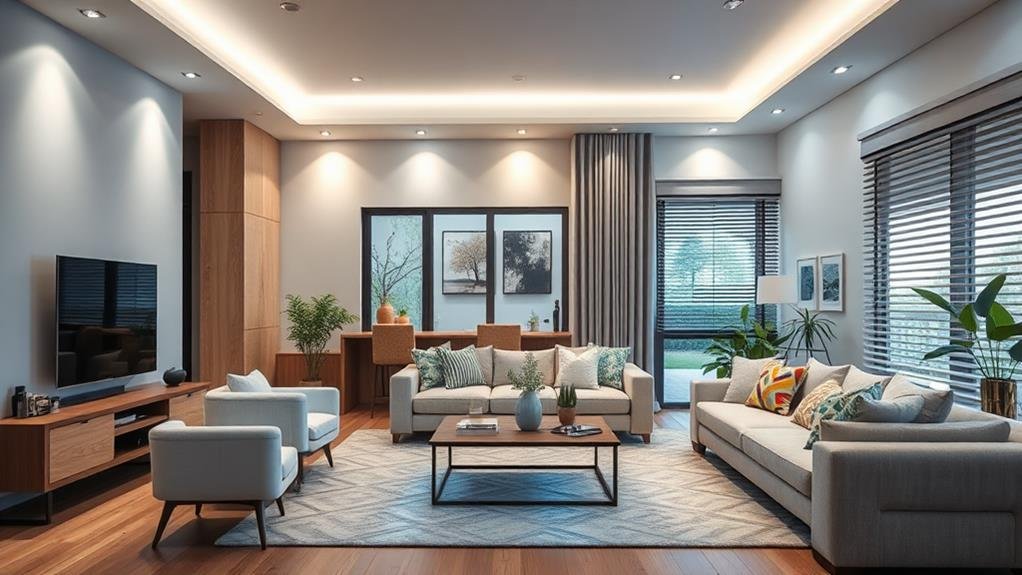
To further elevate your sustainable design and create a truly modern living space, consider integrating smart home technology. Embrace the future with eco-friendly gadgets and intelligent lighting systems that not only enhance your home but also reduce your environmental impact.
Here are some key ways smart home technology can revolutionize your sustainable design:
- Energy Efficiency: Implement smart home automation for sustainable energy management, enabling you to optimize energy usage and reduce waste.
- Convenience and Control: Utilize remote monitoring solutions to track your energy usage and make informed decisions on how to further minimize your footprint.
- Climate Control: Integrate smart thermostat technology for precise temperature control, ensuring optimal energy efficiency while keeping your home comfortable.
- Security and Peace of Mind: Explore connected appliances, voice-controlled systems, and sustainable security options to enhance the safety and sustainability of your home.
Building a Sustainable Design Plan
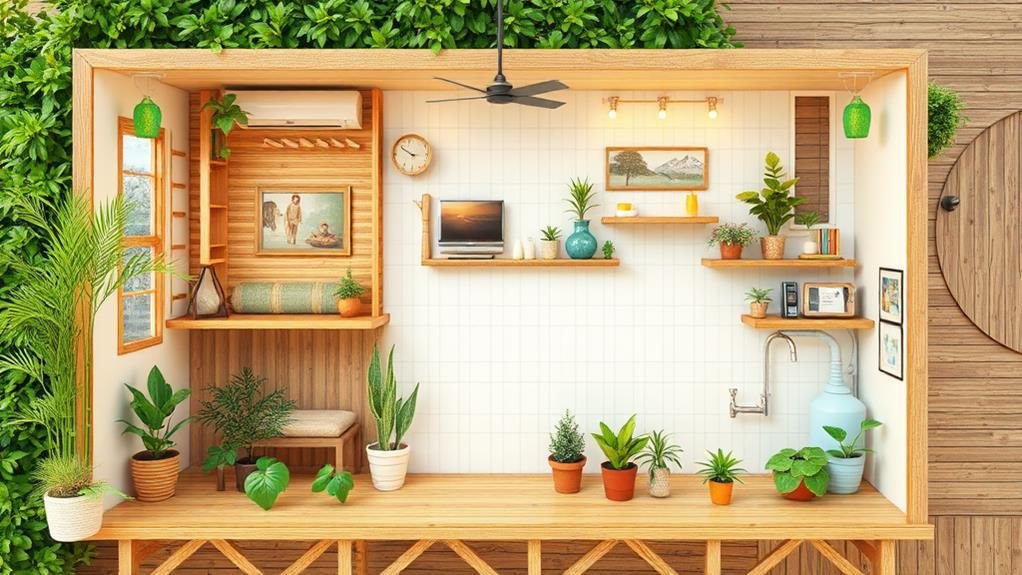
Crafting a Sustainable Design Plan involves meticulous consideration of eco-conscious elements to create a space that harmonizes with the environment.
When designing with sustainability in mind, opting for sustainable color palettes can significantly reduce the environmental impact of your space. Earthy tones, recycled materials in furnishings, and biophilic elements such as plant life can all contribute to a more eco-friendly design aesthetic.
Design space optimization plays a key role in sustainable design plans. Maximizing natural light through strategic window placement can reduce the need for artificial lighting, saving energy and lowering utility costs.
Additionally, incorporating multifunctional furniture and storage solutions can help minimize resource consumption and promote a clutter-free environment.
Conclusion
So, why settle for anything less than sustainable design in your home? Make the eco-friendly choice by incorporating energy-efficient lighting and water-saving fixtures, using eco-friendly materials, and improving indoor air quality. Embrace the principles of biophilic design and integrate smart home technology for a truly sustainable living space. Why not create a space that not only benefits you and your family, but also helps the environment thrive?

